Traditional Karo Musical Instruments
- Karo Music Developments
Music can not be separated in the life of the Karo tribe, both in everyday life and in customary and cultural practices. Tanah Karo is a fertile highland area and has two volcanoes that are still active so most of the livelihood as farmers. And in practice the Karo tribe includes many musical art elements as part of agrarian life itself, such as singing in calling the wind when "ngangin page" is to separate the rice from the rest of the stem when harvesting rice, when "ngeria" is the process to get sweet water or sap from the enau tree and other activities.
In their own customary activities the music also plays an important role in the karo tribe, such as in weddings and death festivals. Not only music, but also dance has a dominant role in the practice of cultivation. In the tribal culture karo dance is used to express not only the condition of joy but also sorrow, and the differences of these celebrations can be seen from the type of dance and typical music used in the event.
Karo music can be divided into traditional karo music and modern karo music. Traditional karo music is a genuine caro tribe instrument that we can generally divide into two kinds of ensamble music namely: Gendang Telu Sidalanen and Gendang Lima Sendalanen.
- Sidalanen Telu Gang
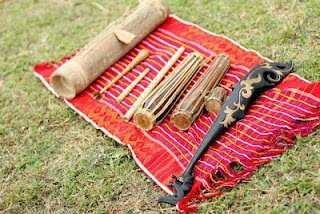
Is an ensemble music consisting of three instruments that are played together in harmony, consisting of:
(1) Kulcapi / balobat,
(2) Ketengketeng, and
(3) Mangkok
In this ensemble there are two instruments that can be used as a carrier of melody ie Kulcapi or balobat. The use of Kulcapi or Balobat as a melody carrier is performed separately in different ceremonies. While Keteng-keteng and bowl is a musical instrument accompaniment that produces rhythm patterns that are constant and repetitive. In the pattern of the game of musical instruments keteng-keteng there sora / sound, penganak, gung, rakem (pattern ritem) singanaki and singindung. The pattern of bowl blows is a constant blow repeatedly following the pattern of the gamelan or gang game in the Sendalanen Five Gendang
- The Allied Five Drums
Drum Five Sendalanen often also referred to as Gendang Sarune Is an ensemble music consisting of five instruments that are played simultaneously in harmony, consisting of 5 (five) pieces of musical instruments, namely:
(1) Sarune,
(2) Gangsang singanaki,
(3) The singduk drum,
(4) Penganak, and
(5) Gung
This is the only thing that is still preserved and can be found in the procession of karo tribal graves in general. While Gendang Telu Sendalenen may be quite difficult we meet again in addition to the traditional art music studio karo or in the community of music lovers karo or also in GBKP church circle that is still preserving. Although many we meet in modern music has also been acculturated between traditional karo music with modern music, for example the use of kulcapi or drum in karo keyboard drum.
While modern music karo or often referred to as karo keyboard drum using modern musical instruments to accompany the song karo. Modern music is known in karo music treasures around the early 1980s in some references to mention that Jasa Tarigan is the "culprit" of the entry of keyboard music in karo music culture. So nowadays is known Karo Keyboard Gender Key which we generally meet at the wedding party, the work of the year and others. In addition to the musical instruments that have been mentioned above, it turns karo tribe has a string instrument called murbab. Although the previous author never heard again about this type of musical instrument.
Murbab is one of the traditional musical instruments of Karo, which is a musical instrument in the category of stringed instruments. Murbab is the only Karo traditional instrument that is played by rubbing. And used to be, these murbabs are played solos or ensembles as melodies. Most likely this instrument is extinct.
- KULCAPI / KECAPI KARO
1 . Introduction to Kulcapi
Kulcapi is one of the traditional musical instruments karo. Kulcapi almost the same as the usual acoustic guitar only difference except kulcapi only have 2 strings (1 and 2), kulcapi tebuat of wood base material in carved in such a way as to produce a harmony sound.
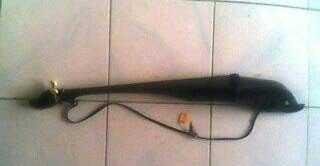
As already described above, Kulcapi itself is one part of the type of music ensambel karo music "Gendang Telu Sedalanen". Kulcapi is a lute-shaped musical instrument that serves as a melody, consisting of two strenged fretted-necked lute. Formerly when the string is made from the roots of the palm tree (enau) but now has replaced the metal strings and also tunning his peg has also been replaced into a modern guitar peg tunning that used to use bamboo / wooden trees so the way to set it must by first pull the stack setem then tuned. Cultivation of Kulcapi (front of Kulcapi resonator) there is no resonator hole, precisely the hole of resonator (called babah) is on the back of Kulcapi.
2 . Tone At Kulcapi Karo
For information I need to let you know that the explanation of the tone that the author will explain is an explanation based on personal conclusions and has no formal formal reference and is based on the author's own instrument, so inconsistencies may occur due to the laying of frets on finger board of different distances and the size of each kulcapi depends on the maker kulcapi own, because as we know there has been no standard standard and formal on making kulcapi.
Indeed in kulcapi karo initially never paired fret / tone barrier as we find today, so in the determination of the tone when playing actually more like a violin than a guitar. But to facilitate the player and the clarity of sound produced then many makers kulcapi now who accidentally add their own fret on finger board kulcapi karo.
Generally there are 5 frets mounted on kulcapi, but to achieve an octave tone we have to play it up to fret 9 on the fret transparent (which is not installed).
3 . How to Play Kulcapi
Kulcapi itself is a musical instrument that often functioned as a melody because it only has two strings although it can be used to fill the intensity of chords by playing two chords simultaneously such as tones do and mi to play in chord C Major which should consist of 3 tones that is do, mi and sol. As a function of melody because of the theoretical limitations of knowledge the author can only suggest to directly practice. To play the melody in kulcapi actually not too complicated especially equipped with the ability to play the guitar would be very helpful because of living up to the tone in each fret place owned kulcapi.
In general, ethnic music in Indonesia using the five major scales or Major Pentatonic Scales, Unlike the case with Karo music, although actually also found the major scale but Karo characteristic is more known minor scale (minor scale) plus the rengget (melisma) as a style both in singing and musical instruments. Well rengget / melisma this is one of the characteristics possessed by karo music. In playing Kulcapi, the resonator hole (babah) also serves to change the color of sound (sound effects) by way of a barrel, which is a game of Kulcapi technique by clashing whole / part of Kulkapi into the body of the Kulcapi player repeatedly in a certain time. The sound effects of Kulcapi produced through this technique of tonggum almost resemble the effect of echo sounds on electronic musical instruments in general.
- Keteng-Keteng
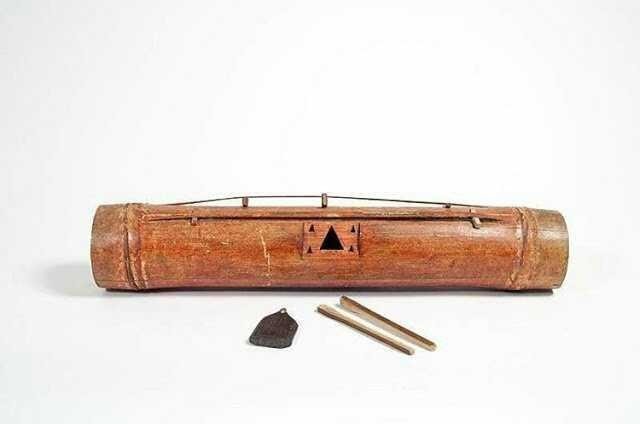
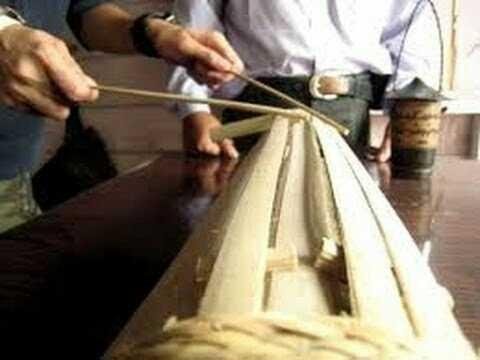
Keteng-keteng is a traditional musical instrument of Karo tribe from North Sumatra based from bamboo. Keteng-Keteng has a length of about half a meter and has a string made of bamboo skin itself. The baton-keteng bat is also made of bamboo pieces and consists of two pieces.
How to play this tool is as simple as hitting a drum instrument. Viewed from the aspect of its functioning keteng-keteng used to be this instrument often played in the context of ensuing ensemble of telu sendalanen as media in ceremony of Erpangir Ku Lau by Karo society. Bekalangan this instrument is also often played in various performances with the aim just as a mere entertainment.
Sarune
1 . Children sarune, made of coconut leaves and embulu-embulu (small pipe) diameter 1 mm and 3-4 mm long. The selected coconut leaves are old and dry. The leaves are formed triangel as much as two sheets. One corner of the two formed leaf sheets is attached to the embers, with the position of the two corners of the leaf,
2 . Tunnel sarune, this section is useful for connecting sarune children. Usually made of tin, the length is equal to the distance between one hole tone with another tone on the hole sarune,
3 . sarune ampanges, this part is placed on the sarune emblems that are useful for the lips container when blowing the sarune. The shape is circular with diameter 3 cm and thickness 2 mm. Made from bone (animal), shell, or silver material,
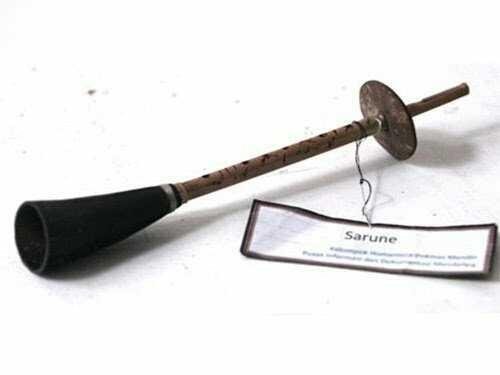
4 . sarune rods, this section is a place of sarune tunnel, the shape of the conis both inside and outside. Sarune has eight tone holes. Seven on the top and one on the back. The aperture 1 to the aperture is 4.6 cm and the aperture of VII to the tip of the sarune is 5.6 cm. The distance between each tone is 2 cm, and the distance of the hole to the slab 5.6 cm.
5 . sarund gundal, located on the bottom of sarune rod. Gundal sarune is made from the same material as sarune rod. The shape of the inside of the barrel, while the outer shape of the cone. the length of the sarune belt depends on the length of the sarune rod is 5/9.
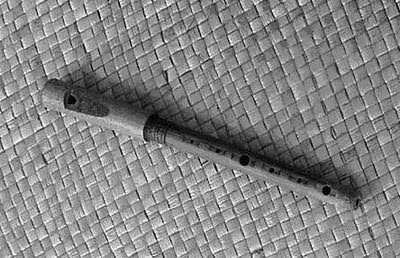
Sanggaraki drums and drums protect
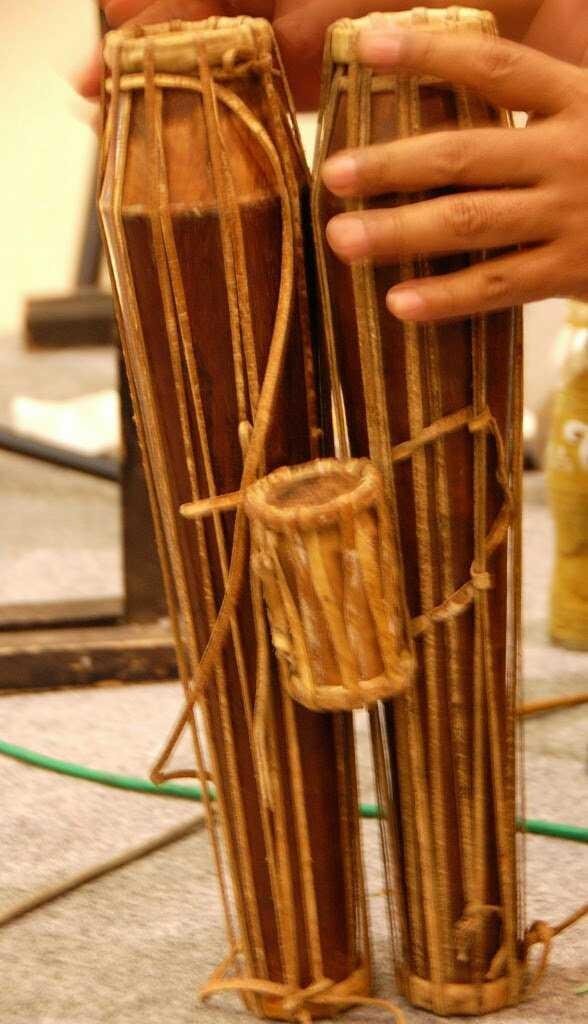
Singanaki drum and Gendang singindung (double sided conical drums) are two musical instruments made of jackfruit wood. On both sides of the conical musical instrument, there is a membrane made of animal skin. The front / top side or the hit part is called the drum boom, the back / bottom side (not beaten) is called the drum bee. Both instruments have a small size, length about 44 cm, with a drum diameter about 5 cm, while the diameter of the drum bearing about 4 cm.
Both instruments have similarities in terms of materials, shapes, sizes, and ways of making it. The difference is only in the "mini drum" called a hanging (11.5 cm long) tied on the side of the body drum singanaki, while the singduk shield is not there. The singduk drum can produce up and down sounds through certain game techniques, while the singanaki drum does not have the technique so that the resulting sound can not rise and fall. Each drum has two drum hammers or a 14 cm long drum stick.
- Gung and Penganak
Penganak and gung belong to the type of suspended idiophone / gong berencs that have similarities in terms of construction of the form, which is the same as gongs that are commonly found in the culture of archipelago music. The difference between the two (Penganak and gung) is in terms of size or width of its diameter.
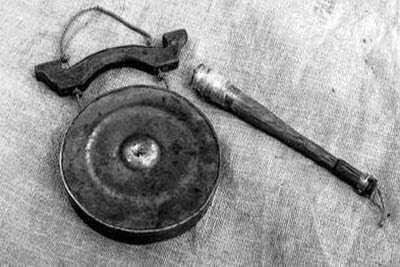
Gung has a large size (diameter 68.5 cm), and pancak has a small size (diameter 16 cm). Gung and Penganak are made of brass, while the hammers (hammers) are made of wood with soft objects that are deliberately made at the ends to produce a gung sound that is more comfortable to hear (gung hammer).
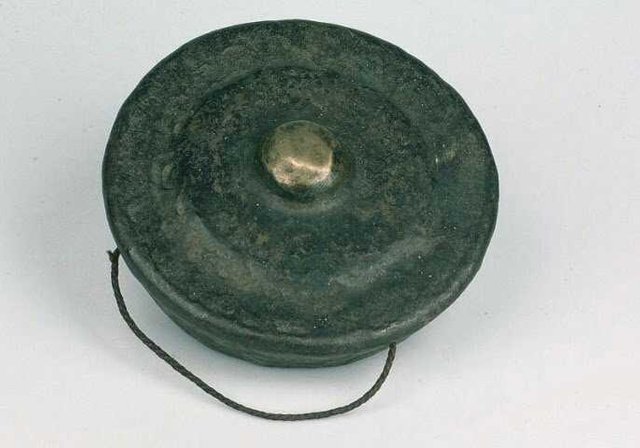
The role of each instrument in the Allium Five Drums
The Five Beads drums as a musical ensemble consisting of five musical instruments have different sounds and different ways of playing according to the shape of the instrument.
Sarune is played by blowing the sons of the sarune (reeds) while the fingers of both hands of the player hold (open and close) the tone pit contained on the body (rod) of the instrument. This Sarune musical instrument in the Sendalanen Five Gang has a role as the bearer of the melody of the song.
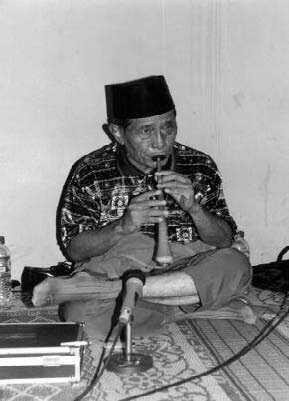
Meanwhile, the singanaki drum, the singukung drum is played by punching the head drum (head membrane) each with two palupalu drum (tool on the drum / stick). Singanaki drum produces repetitive rhythm pattern, while Gondang singindung carries a variable rhythm pattern, in contrast to the rhythm pattern played by the sanggaraki drum.
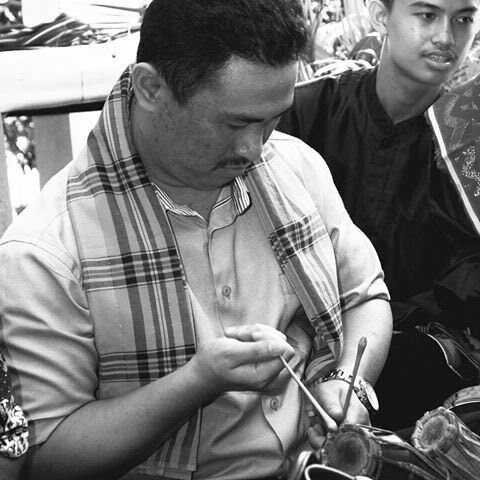
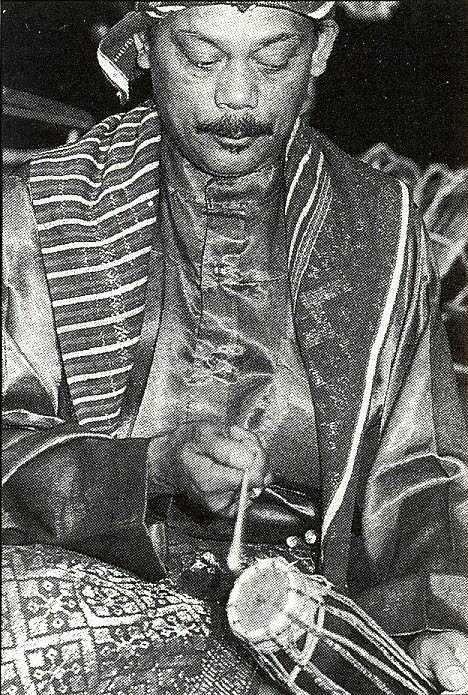
Penganak and gung are played by hitting the turtle located in the center of the fish and gang each with one hammer-hammer. Both instruments produce repetitive blow patterns.
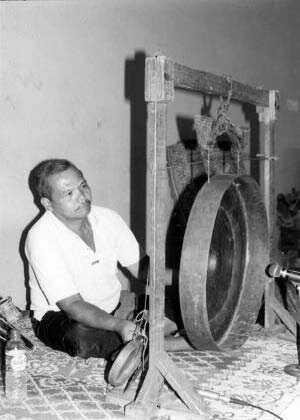
The positions of the players of the Allied Gendang Lima
In general, the players of the Allied Gendang Lima in each show play in a sitting position. This sitting position - especially for penarune and penggual - is a standard position for two things:In generating certain notes, the penarune should cover the tip of his Sarune (tonggum) into the calf part of his own leg,
The scholar always interconnects his musical instrument (the singanaki drum and the shovel) between his legs in a cross-legged position, so that the position of the instrument becomes diagonal, with the drum chest leads to the right of the propeller.
Simalu gung and simalu pebarak also play in a sitting position, while both instruments are always hanging with a rope at a place that has been provided specifically
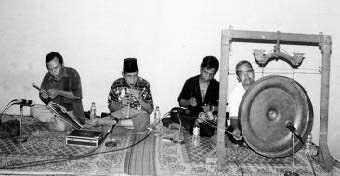
Here's a little story about me in karo land and see and learn the culture and art culture that exist in this place. Thank you for reading this article and see you in the following article.